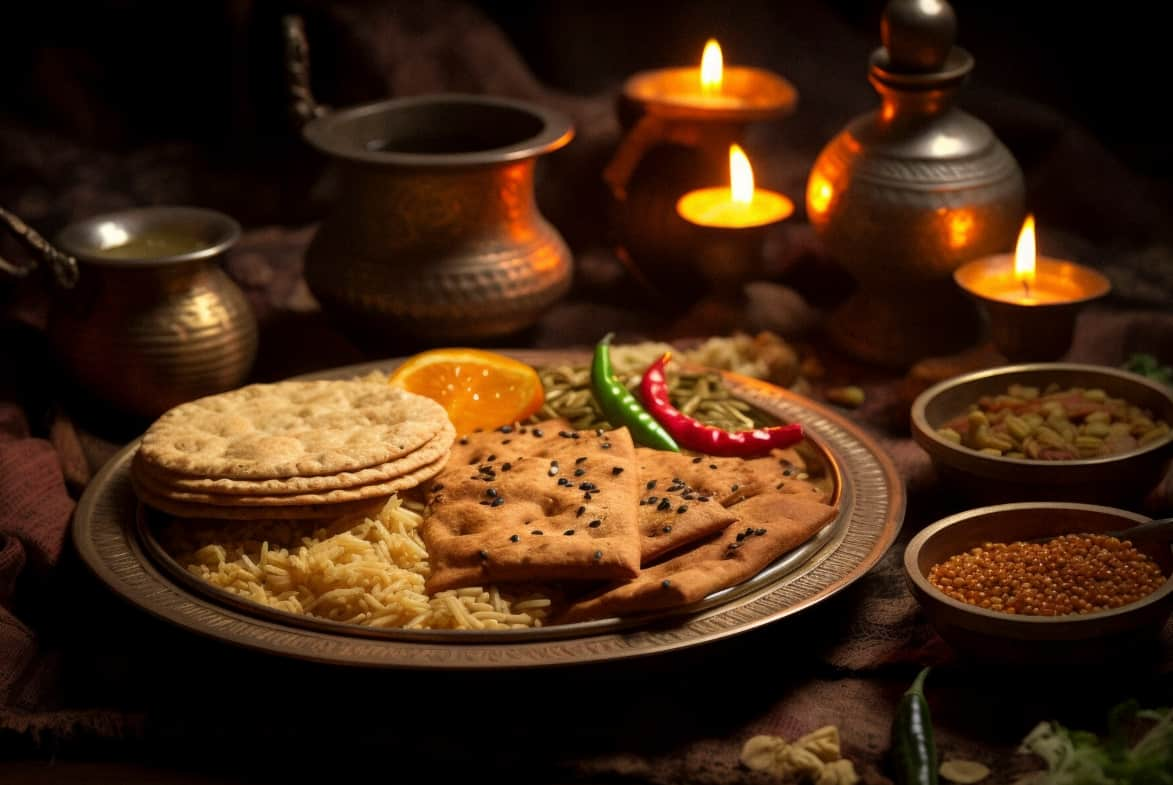Hey there, food lovers! Ever heard of chuñuphuti con mani? If not, you’re in for a treat! This yummy dish comes from Tarija, Bolivia, and it’s packed with flavor and history.
Today, we’re going to dive into the world of this special food and find out why it’s so loved.
Imagine a warm, comforting dish that brings families together and tells the story of a whole culture. That’s chuñuphuti con mani for you!
It’s not just food; it’s a taste of Bolivia on a plate. Whether you’re planning a trip to Tarija or just want to learn about cool foods from around the world, this article is for you.
Chuñuphuti Con Mani Tarija

We’ll talk about what’s in this dish, how it’s made, and why it’s so important to the people of Tarija.
Get ready to learn about a food that’s more than just a meal – it’s a journey through Bolivian culture!
What is Chuñuphuti con Mani?
Let’s start with the basics. Chuñuphuti con mani is a traditional Bolivian dish that’s super popular in Tarija. But what’s in it? Here’s the scoop:
- Chuño: This is the star of the show. It’s a type of dried potato that’s been around for ages.
- Mani: That’s just the Spanish word for peanuts. They add a nice crunch to the dish.
- Sauce: A tasty mix of onions, tomatoes, and spices brings everything together.
This dish is like a warm hug for your tummy. It’s hearty and filling, which is why so many people in Bolivia love it. The mix of soft chuño and crunchy peanuts makes for a really interesting texture that you don’t find in many other foods.
Chuñuphuti con mani isn’t just any old recipe. It’s a dish that tells the story of Bolivian history and culture. The way the potatoes are dried (we’ll talk more about that later) is an old technique that goes way back to ancient Andean civilizations. Cool, right?
The Nutritional Benefits: More Than Just Tasty
Now, you might be thinking, “Okay, it sounds good, but is it good for me?” Well, you’re in luck! Chuñuphuti con mani isn’t just delicious; it’s also pretty healthy. Let’s break down the good stuff you get when you eat this dish:
| Ingredient | Nutritional Benefit |
|---|---|
| Chuño | High in carbs, gives you energy |
| Peanuts | Full of protein and healthy fats |
| Vegetables | Vitamins and minerals |
Here’s why this matters:
- Energy boost: The chuño gives you lots of carbs, which your body turns into energy.
- Muscle power: Peanuts are packed with protein, which helps keep your muscles strong.
- Heart health: The good fats in peanuts are great for your heart.
- Vitamin variety: The veggies in the sauce add different vitamins to keep you healthy.
But it’s not just about the nutrients. Chuñuphuti con mani is part of a balanced diet in Bolivia. It’s a dish that fills you up and gives you what you need to tackle your day. Plus, because it uses local ingredients, it’s a great way to eat what’s grown nearby.
Traditional Preparation Techniques: A Step Back in Time
Making chuñuphuti con mani isn’t just cooking; it’s like performing a food ritual that’s been passed down for generations. Let’s walk through how it’s made:
- Making chuño:
- Potatoes are left outside to freeze at night
- During the day, people step on them to remove moisture
- This process is repeated until the potatoes are totally dry
- Preparing the sauce:
- Onions and tomatoes are chopped up
- Spices are added to give it a kick
- Everything is cooked together to make a tasty sauce
- Cooking it all together:
- The dried chuño is added to the sauce
- Peanuts are tossed in for crunch
- It all simmers together, letting the flavors mix
This way of cooking is super old. The technique for making chuño goes back to the time of the Incas! They figured out this smart way to preserve potatoes so they could eat them all year round.
What’s cool is that these old techniques are still used today. It shows how important tradition is in Bolivian cooking. Every time someone makes chuñuphuti con mani, they’re keeping this old way of cooking alive.
Where to Find Chuñuphuti con Mani in Tarija?
If you’re in Tarija and your tummy’s rumbling for some chuñuphuti con mani, you’re in luck! This dish is all over the place. But where should you go for the best experience? Here are some tips:
- Local markets: These are great spots to find authentic food. Look for busy stalls – that’s usually a sign of good eats!
- Traditional restaurants: Ask for places that specialize in Bolivian food. They often have the best chuñuphuti con mani.
- Family-run eateries: Small, family-owned places often make food just like grandma used to make.
- Food festivals: If you’re lucky, you might visit during a food fest where you can try lots of different versions.
Pro tip: When you’re out and about, look for places where the locals are eating. That’s often where you’ll find the tastiest, most authentic chuñuphuti con mani.
Remember, each place might be a little different. That’s part of the fun! You might find:
- Spicier versions
- Extra creamy ones
- Some with more veggies mixed in
Don’t be shy to ask questions about how it’s made. Many cooks love to share the story behind their special recipes!
Enjoying Chuñuphuti con Mani in a Cultural Context
Eating chuñuphuti con mani isn’t just about filling your belly. It’s a way to dive into Bolivian culture. Here’s how this dish fits into the bigger picture of life in Tarija:
- Family gatherings: It’s often served at big family meals. Imagine everyone sitting around, sharing stories over steaming plates of chuñuphuti con mani.
- Festivals: During local celebrations, you’ll often find this dish being served. It’s a way to connect with tradition during special times.
- Community bonding: Cooking and eating this dish together is a way for people to strengthen their ties to each other and their roots.
When you eat chuñuphuti con mani, you’re not just tasting food. You’re experiencing:
- History: Each bite connects you to centuries of Bolivian culture.
- Local life: You get a taste of what everyday meals are like for people in Tarija.
- Traditions: The dish represents cooking methods and flavors passed down through generations.
If you’re visiting Bolivia, trying chuñuphuti con mani is a great way to feel like a local. It’s more than just tourist food – it’s a real part of life here.
Variations of Chuñuphuti con Mani: Same Dish, Different Twists
Just like how every family has their way of making mac and cheese, chuñuphuti con mani comes in different styles too. Here are some cool variations you might come across:
- Spice it up: Some folks like to add extra chili peppers for a fiery kick.
- Veggie boost: You might find versions with carrots, peas, or other veggies mixed in.
- Meat addition: Sometimes, small pieces of meat are added for extra flavor and protein.
- Cheese lover’s dream: A sprinkle of local cheese on top can make it extra yummy.
- Herb infusion: Fresh herbs like cilantro or parsley can add a burst of freshness.
Here’s a quick look at some popular twists:
| Variation | Extra Ingredients | Flavor Profile |
|---|---|---|
| Spicy | Chili peppers | Hot and zesty |
| Veggie | Mixed Vegetables | Colorful and nutritious |
| Meaty | Beef or chicken | Rich and savory |
| Cheesy | Local cheese | Creamy and indulgent |
| Herby | Fresh herbs | Light and aromatic |
Why all these different versions? Well, it shows how creative Bolivian cooks can be. Each family or restaurant might have their special way of making chuñuphuti con mani. It’s like they’re putting their stamp on this classic dish.
Trying different variations is a fun way to explore the diverse tastes of Bolivia. You never know – you might find a new favorite!
The Impact of Local Ingredients on Flavor
The secret to why chuñuphuti con mani tastes so good? It’s all about the local ingredients. In Tarija, people take pride in using fresh, locally-grown stuff to make their food. Here’s why that matters:
- Fresh taste: Ingredients that don’t have to travel far taste better.
- Seasonal yum: The flavors change a bit depending on what’s growing at the time.
- Supporting local farmers: Using local ingredients helps the community.
Let’s look at some key ingredients and how they make the dish special:
- Potatoes: Bolivian potatoes come in many types. Each kind can change the texture of the chuño.
- Peanuts: Local peanuts have a rich, earthy flavor that store-bought ones just can’t match.
- Tomatoes and onions: When they’re fresh from nearby farms, they’re extra juicy and flavorful.
- Spices: Local spice blends give the dish its unique Tarija taste.
Using local stuff isn’t just about taste. It’s also about keeping traditions alive. When cooks use ingredients that have been grown in the area for hundreds of years, they’re connecting to the past in a tasty way.
Next time you eat chuñuphuti con mani, think about all the local goodness that went into making it. It’s like tasting a little piece of Tarija in every bite!
Why Chuñuphuti con Mani Deserves Attention?
You might be wondering, “Why should I care about this dish?” Well, chuñuphuti con mani is more than just food. It’s a window into Bolivian culture. Here’s why it’s so special:
- History in a bowl: This dish tells the story of Bolivia’s past. The way it’s made goes back centuries.
- Eco-friendly food: Using local ingredients and old preservation methods (like making chuño) is good for the planet.
- Cultural pride: For people in Tarija, this dish is a source of pride. It shows off their cooking skills and traditions.
- Nutritional powerhouse: It’s a balanced meal that gives you energy and nutrients.
- Taste adventure: The mix of textures and flavors is unlike anything you’ll find in other cuisines.
- Community builder: Sharing this dish brings people together, strengthening bonds between families and friends.
- Economic support: When you eat chuñuphuti con mani, you’re supporting local farmers and cooks.
By paying attention to dishes like this, we:
- Learn about different cultures
- Understand food history
- Support local communities
- Discover new flavors
So next time you hear about chuñuphuti con mani, remember – it’s not just food. It’s a taste of Bolivia’s heart and soul!
How to Make Chuñuphuti con Mani at Home?
Want to bring a bit of Bolivia to your kitchen? Let’s learn how to make chuñuphuti con mani! Don’t worry if you can’t find all the traditional ingredients – we’ll give you some easy swaps.
What you’ll need:
- 2 cups of chuño (or dehydrated potatoes)
- 1 cup of roasted peanuts
- 1 onion, chopped
- 2 tomatoes, diced
- 2 cloves of garlic, minced
- 1 teaspoon of cumin
- Salt and pepper to taste
- Oil for cooking
- Water
Steps:
- Prep the chuño:
- If using chuño, soak it overnight.
- If using regular potatoes, peel, cut into cubes, and boil until soft.
- Make the sauce:
- Heat oil in a pan.
- Add onions and garlic, and cook until soft.
- Add tomatoes, cumin, salt, and pepper.
- Cook until tomatoes break down.
- Combine everything:
- Add the chuño (or potatoes) to the sauce.
- Pour in water and let it simmer.
- Add peanuts and stir.
- Cook until the dish thickens.
- Serve and enjoy:
- Taste and adjust seasoning.
- Serve hot, maybe with a sprinkle of fresh herbs on top.
Tips for success:
- Can’t find chuño? Use regular potatoes or even instant mashed potatoes in a pinch.
- Make it your own by adding your favorite spices or veggies.
- The dish should be thick, not soupy. Add water slowly as you cook.
Remember, cooking is about having fun and trying new things. Your chuñuphuti con mani might not be exactly like what you’d get in Tarija, but it’ll be your own special version!
FAQs: Your Chuñuphuti Con Mani Questions Answered
Got questions about chuñuphuti con mani? We’ve got answers! Here are some things people often want to know:
- Q: What does “chuñuphuti con mani” mean in English?
A: It means “dried potato dish with peanuts.” “Chuñu” is the dried potato, “phuti” means it’s cooked in a certain way, and “mani” is peanuts.
- Q: Is chuñuphuti con mani spicy?
A: Not usually, but some people like to add spice. The basic version is pretty mild.
- Q: Can I make this dish vegetarian?
A: Yes! The traditional version is already vegetarian. Just make sure any broth you use is veggie-based.
- Q: How long does it take to make chuñuphuti con mani?
A: If you’re using regular potatoes, about an hour. With chuño, you need to soak it overnight first.
- Q: Is this dish good for you?
A: Yes, it’s pretty nutritious. You get carbs from the potatoes, protein from the peanuts, and vitamins from the veggies in the sauce.
- Q: Can I freeze leftover chuñuphuti con mani?
A: Sure! It freezes well. Just reheat it gently and add a bit of water if it’s too thick.
- Q: What do people usually eat with this dish?
A: It’s often enjoyed on its own, but some people like to have it with a side of rice or a fresh salad.
- Q: Is chuñuphuti con mani only eaten in Tarija?
A: While it’s most famous in Tarija, you can find versions of it in other parts of Bolivia too.
Conclusion: A Culinary Journey Awaits
We’ve explored the world of chuñuphuti con mani, a dish that’s more than just food. It’s a taste of Bolivian history and culture in every bite.
From its unique ingredients to its traditional preparation, this dish tells a story of Tarija’s people and their heritage.
Whether you’re planning a trip to Bolivia or just want to try something new at home, chuñuphuti con mani offers a flavorful adventure.
It’s a reminder that food can connect us to places, people, and traditions, even from far away.
So why not give it a try? Your taste buds – and your curiosity – will thank you!



